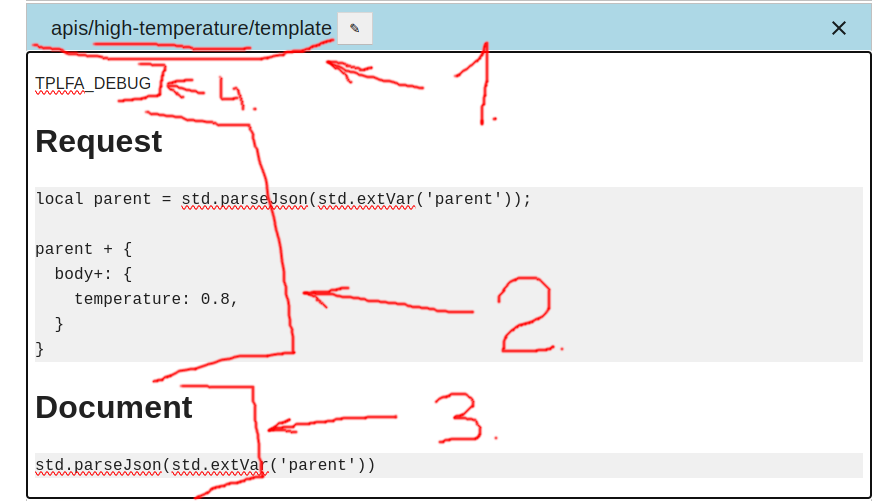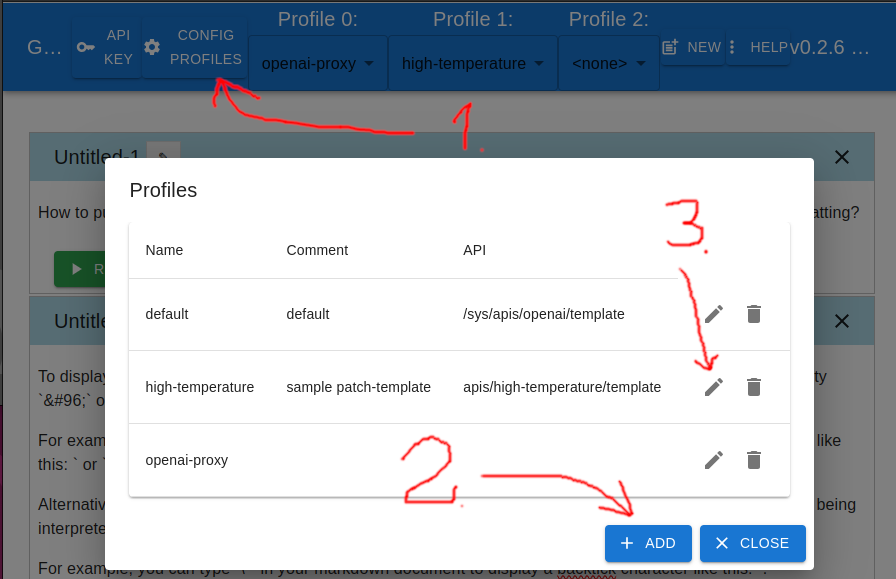API templating
API Templating
GeWoVa supports arbitrary AI models through API templating. Overriding defaults is also implemented through API templating.
Desired state
Use case 1: Custom API

Use case 2: Chain of templates
In the setup below, the templating workflow is as follows:
- first, run the default openai template,
- second, patch the endpoint to connect to another openai-compatible service,
- third, patch the request to set generation parameters.

Step 1: Get the template code
To learn how to write templates, visit the “templating for API” project. As a quick help, below are examples of patching templates.
openai-proxy template to set the target URL:
local parent = std.parseJson(std.extVar('parent'));
parent + {
url: 'http://localhost:8080/open-ai-proxy/chat/completions'
}
high-temperature template to patch the request body:
local parent = std.parseJson(std.extVar('parent'));
parent + {
body+: {
n: 3,
temperature: 0.8,
}
}
Further links:
- OpenAI API reference lists parameters for the “chat” endpoint
- GeWoVa template for OpenAI
Step 2: Put code into GeWoVa
A template in GeWoVa is a normal document with conventions:
- The name is
apis/<name>/template - The “request” template is
- a paragraph with the word “Request”, followed by
- a code block
- The “document” template is:
- a paragraph with the word “Document”, followed by
- a code block
Note: a code block is created by placing three backticks (```) at the beginning of a line and then pressing the <space> button.

Here is a legend to the screenshot above:
- The template name is
high-temperature, so the document name isapis/high-temperature/template - This is a patch-template to add the parameter
temperatureto the query - This is a patch-template to transform an OpenAI response (already transformed by the default template) to a GeWoVa document. The sample code is an identity transformation that does nothing. The block (3) can be deleted from the template.
- The debug-flag
Step 3: Attach a template to a profile
There is a difference between a template and a profile:
- “profile” is what you select in the top bar of the application
- “profile” is a collection of several things, such as an API template and API secrets
- “template” is a named code
- One template can be used in multiple profiles
Attaching a template to a profile should be obvious. Below is a screenshot showing the main control buttons.

Troubleshooting
Add a paragraph with the text TPLFA_DEBUG to the body of a template. GeWoVa will print the transformation details to the web console.
If this doesn’t help, debug the templates with tools from the “templating for API” and jsonnet projects.